
Best edits -

'My room is like entering my mind' - jyothi. I thought this was the perfect place for her portrait. I didn't want her room to be tidy either as it shows a stereotypical teenage room and I don't believe a photo should be made to look perfect, as a camera should record real life.
I chose this space for Rutter as it is where she spends her time every day at school. I thought the background of student artwork clearly makes reference to her profession, especially as Rutter chose to display these pieces.
Category Archives: Uncategorized
Filters
additional portraiture research and artists

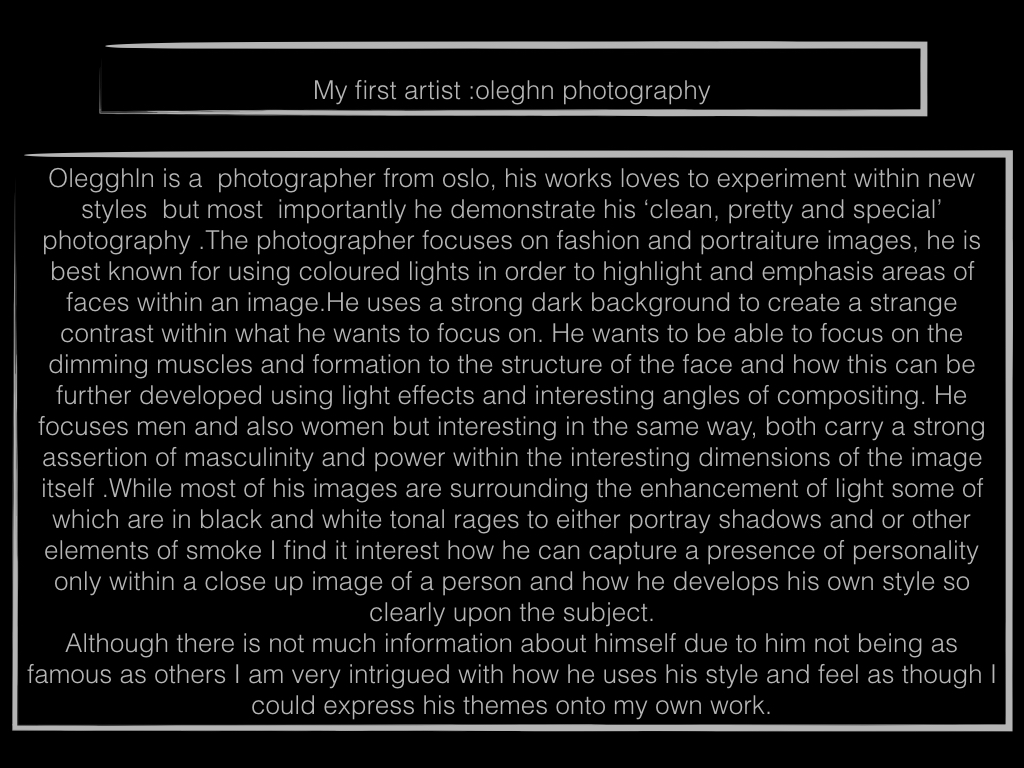

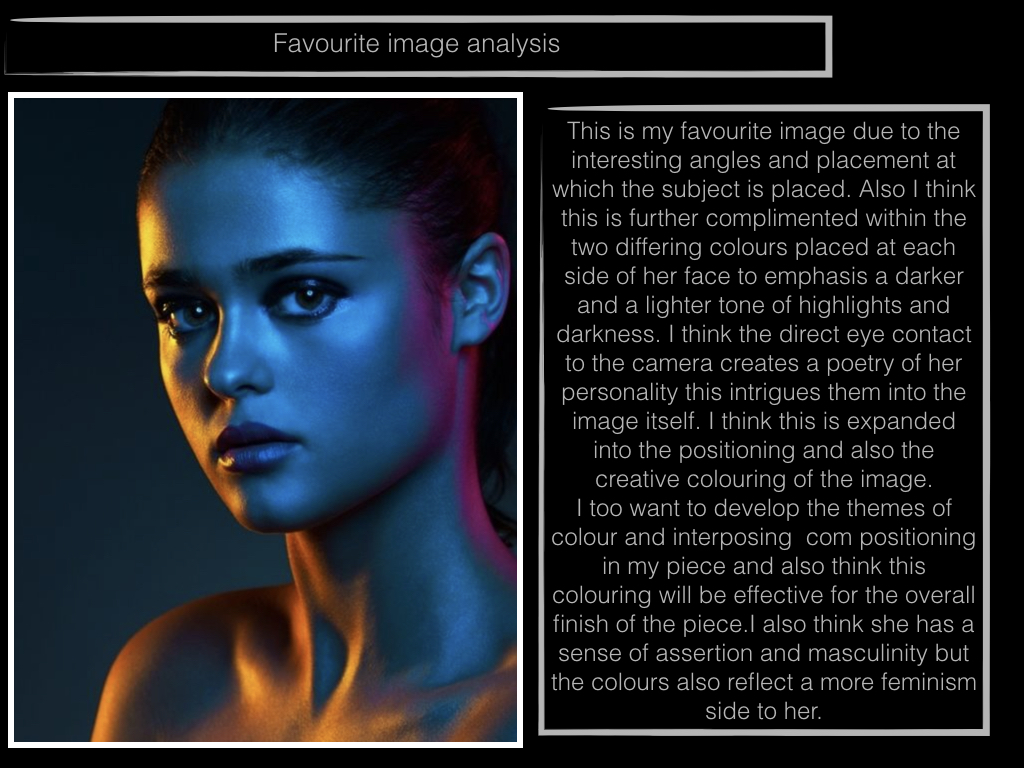
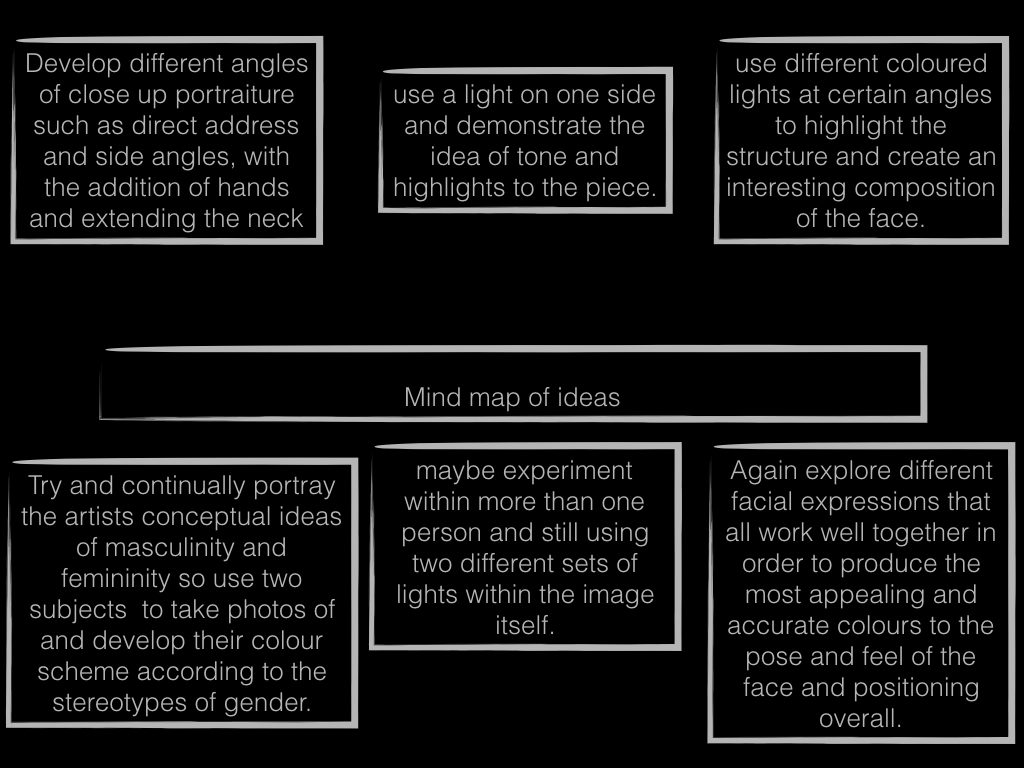

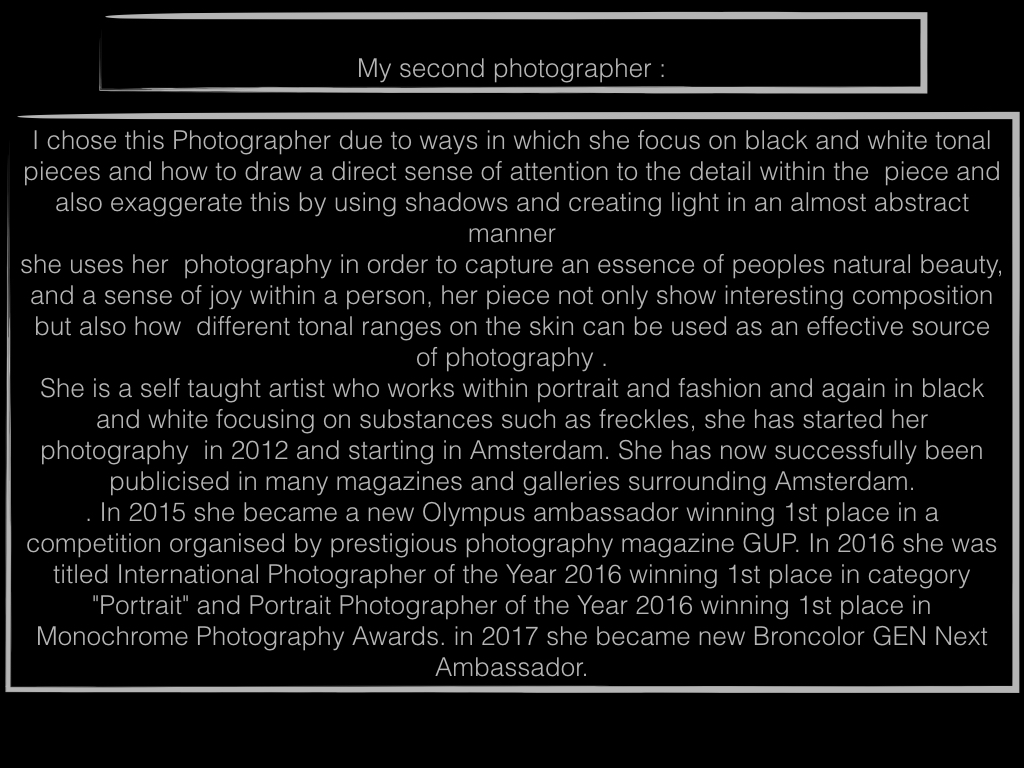




arnold newman
Arnold Newman - was known best for his environmental portraits of artists and politicians. He was also known for his carefully composed abstract still life. Newman was is credited for being the first photographer to use environmental portraits. Contextual - Gypsy Rose Lee's environmental portrait captures and reflects her personality and work. The pose she is in could be viewed as provocative which reflects Gypsy's profession as a burlesque dancer. Gypsy was credited as an artist for turning striptease into 'seven minutes of sheer art'.

Technical - The fact that this photograph is in black and white indicates that is may have been an earlier photograph of Newman's work. The photograph has a wide range of tones which makes it more intimate especially with the use of a lamp in the frame which gives a completely different ambiance compared to if it wasn't there. The shadows in the portrait show that there was another source of light which would have been softened to keep an intimate effect - the lamp was only used as a prop to help represent Gypsy. Visual - Gypsy lies on a chaise lounge which purposely captivates the viewer - even though Gypsy is fully clothed in a long dress she still teases the viewer because of her pose. The lamp adds to the photograph as it adds ambiance which creates a different mood - making it more intimate. As an artist, Gypsy is surrounded by art which keeps the focus on Gypsy as an artist which balances the mood of the photograph. Conceptual - Even though Gypsy was an ecdysiast the photograph has been carefully constructed to present her as an artist with elements that suggest her profession but don't take over the photograph. This photograph is the most complicated in the way of which the viewer has to deconstruct the image.
August Sander
Who is August Sander?
August Sander was a German portrait and documentary photographer. Sander’s first book Face of our Time was published in 1929. Sander has been described as “the most important German portrait photographer of the early twentieth century.

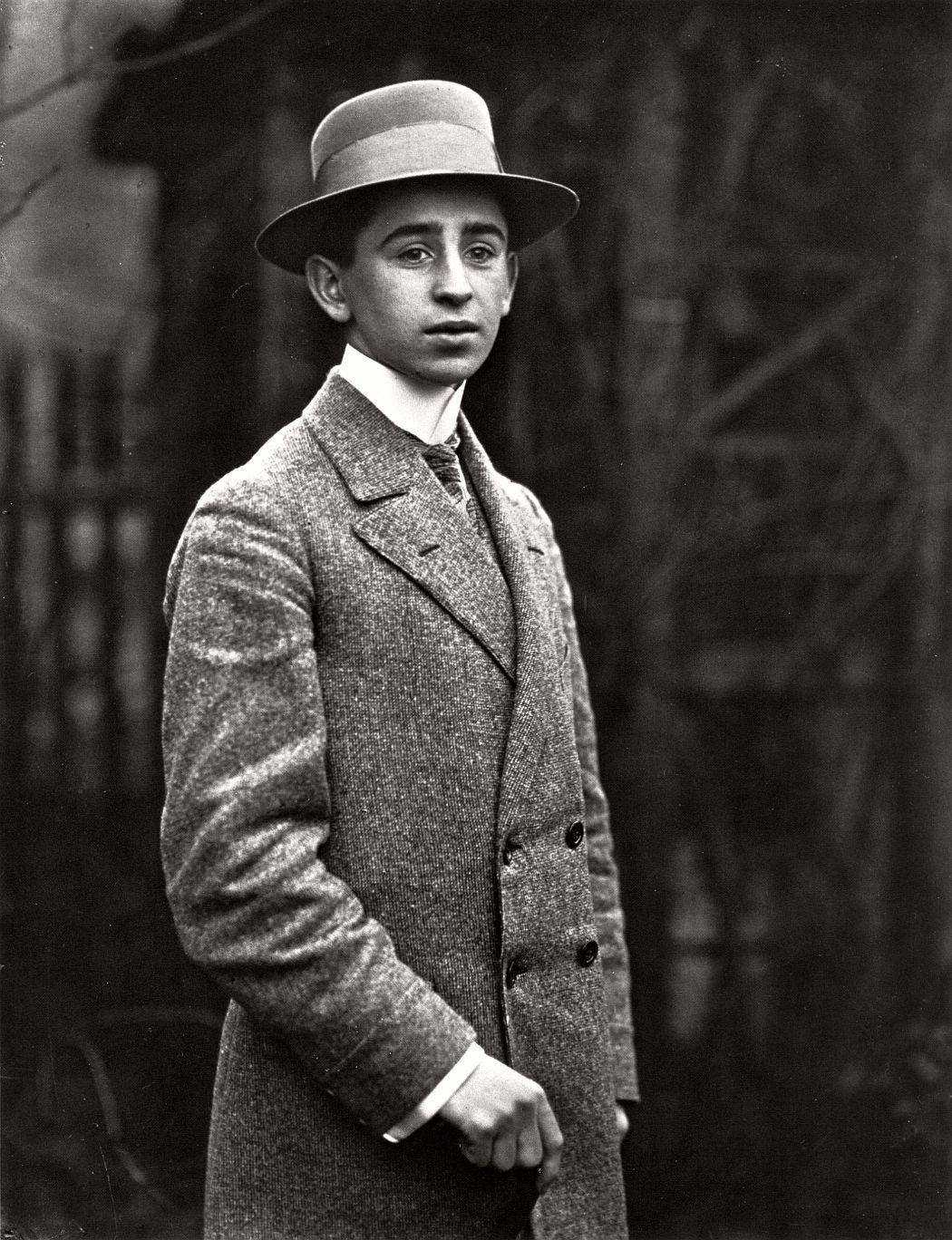
Photo analysis of one of August Sanders pieces
 This black and white environmental portrait of three German boys in suit’s strongly reflects there social class clearly and also creates a story as to who they are. This image was clearly before or well after the first world war as the three boys would be wearing another suit as this picture was taken round the same time. There is a strong contrast in this image, coming from the grey sky and the boys black suits. The use of the contrast really helps the three boys stand out in the picture. The dull natural lighting lights up the boys faces also helping them to stand out and also sharpening their features.
This black and white environmental portrait of three German boys in suit’s strongly reflects there social class clearly and also creates a story as to who they are. This image was clearly before or well after the first world war as the three boys would be wearing another suit as this picture was taken round the same time. There is a strong contrast in this image, coming from the grey sky and the boys black suits. The use of the contrast really helps the three boys stand out in the picture. The dull natural lighting lights up the boys faces also helping them to stand out and also sharpening their features.
Michelle Sank
Who is Michelle Sank?
Michelle Sank was born in Cape Town, South Africa. She left there in 1978 and has been living in England since 1987. Her images reflect a preoccupation with the human condition and to this end can be viewed as social documentary. Her work encompasses issues around social and cultural diversity.


 Photo analysis of one of Michelle’s pieces
Photo analysis of one of Michelle’s pieces

This coloured environmental portrait is of a girl sitting down rolling a cigarette. The girl in this image is positioned on the right hand side of the image which applies to the rule of thirds as she is following the right vertical line. A fast shutter speed was used to capture the vibrant colours from the sky and the multi coloured boxes in the background. A hard light and a high iso has been used as all the colours within this image have been made brighter and bolder and make this image look brighter.
Arnold Newman
Who is Arnold Newman? Arnold Newman was born March 3, 1918 in New York City. He studied art under a scholarship at the University of Miami, Coral Gables, from 1936 to 1938. However he died in New York City on June 6, 2006. Generally acknowledged as the pioneer of the environmental portrait, he is also known for his still life and abstract photography, and he is considered as one of the most influential photographers of the 20th Century.Newman began his career in photography in 1938 through working at chain portrait studios in Philadelphia, Baltimore, and West Palm Beach, and immediately began working in abstract and documentary photography on his own. In June of 1941, Beaumont Newhall of the Museum of Modern Art and Alfred Stieglitz “discovered” him, and he was given an exhibit with Ben Rose at the A.D. Gallery in September. There he began working on experimental portraiture, developing an approach that is widely influential in portrait photography today. In 1945 his Philadelphia Museum of Art one-man exhibit, “Artists Look Like This,” attracted nationwide attention. Well established, he moved to New York in 1946 and opened his studio and became a member of the American Society of Magazine Photographers, Newman’s new approach to portraiture began its influence through key publications in America and abroad. In 1949, he married Augusta Rubenstein, and they had two sons, Eric, born 1950, and David, 1952. His wife died in 2009.
I decided to analyse one of the images taken by Arnold, to see what made them so effective.From this image of Audrey Hepburn, what I believe makes it so effective, is the use of the rule of thirds within, which when taken into account, find that the models eyes line up with the top right corner, which is where you can find your eyes instantly drawn to. There is also that there is an even light throughout the whole picture, creating a balanced scene within throughout, which helps contribute to the visually pleasing aspect. Visually, what I find makes it so effective is the use of the subjects position and composition of the shot within. For example the person is evenly positioned in the center of the photo looking away, this visually makes it aesthetically pleasing to the eye, due to how the head which is the key part of the image is facing away, with a calm facial expression making it a very relaxed shoot. I also think the use of clothing from the neck to the bottom of her shoulders brings the image together, this is because of how the clear contrast between the blackness and the white brings out the features of the rest of the subject. The context of this image about Audrey Hepburn, was that Arnold Newman wanted to show that even if someone was famous to you or not, the image none the less could get you excited and interest the viewer. He wanted to capture the essence of Audrey's life and work, and so tried to do so with a controlled environment for the picture. He wanted to present what defined Audrey Hepburn as a whole, and so thought that through this composition would be able to reflect her life and work, in order to impact the viewer the most.
Environmental Image Analysis

Artist Case:Arnold Newman
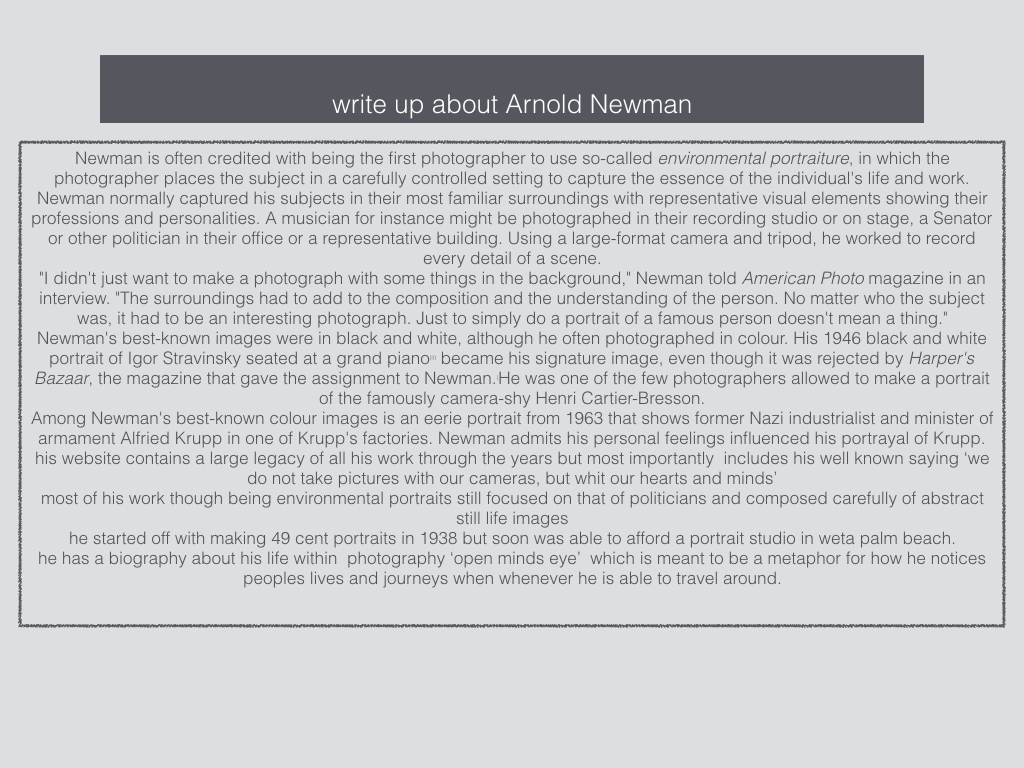

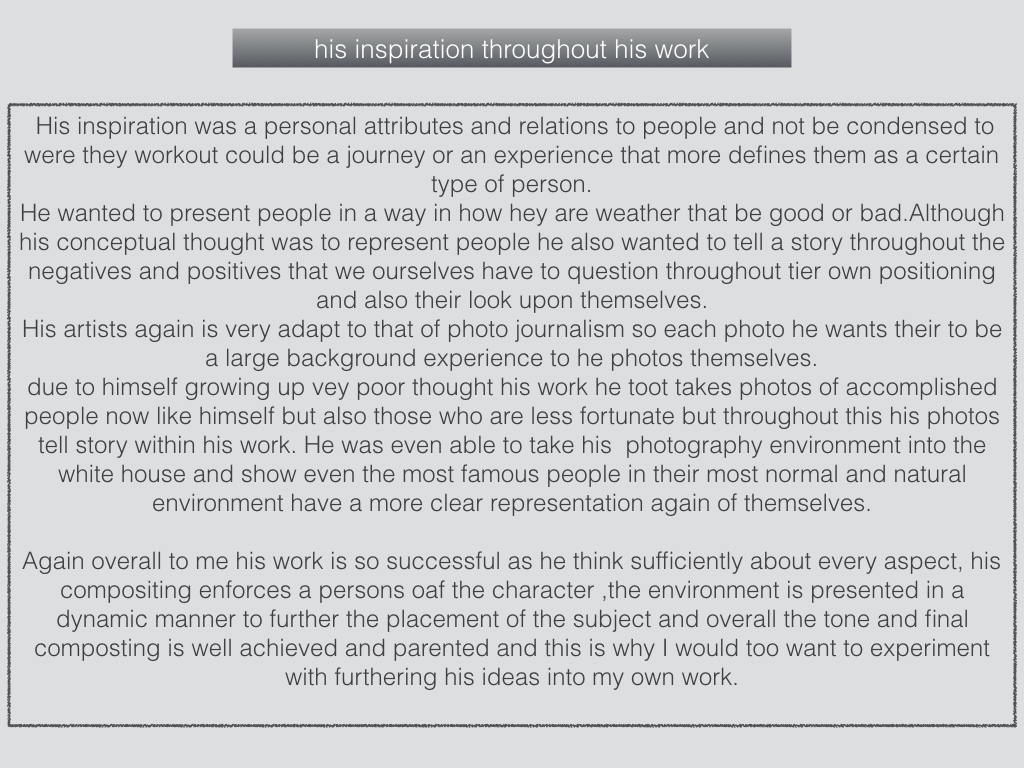

Environmental portraits extension



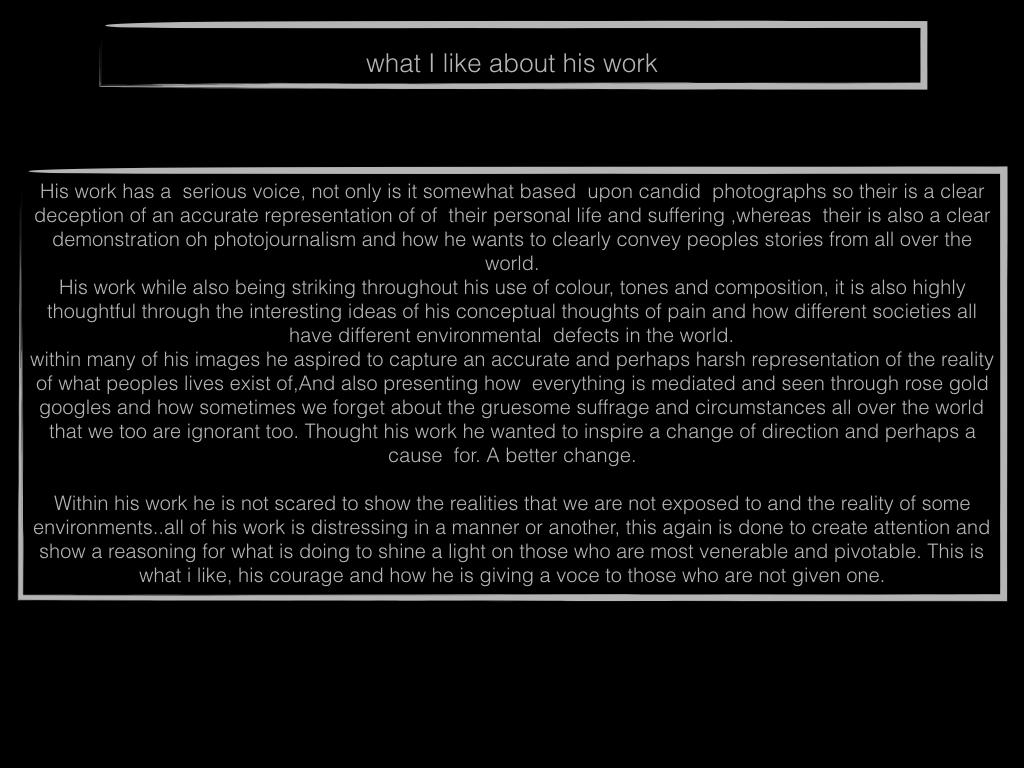
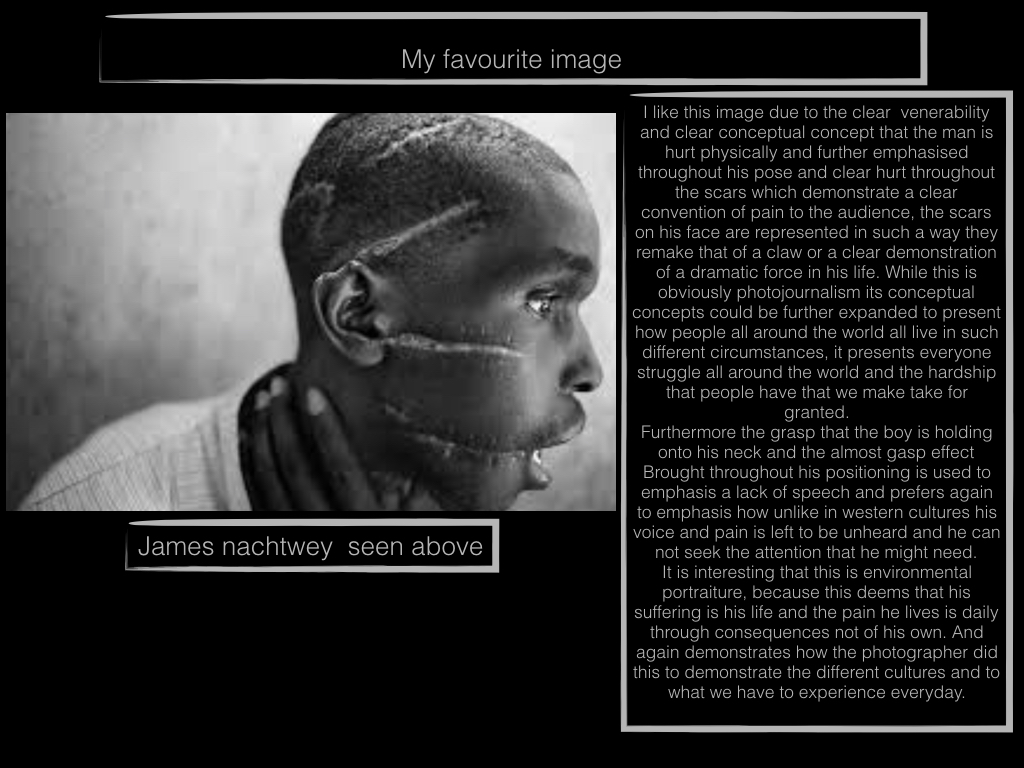

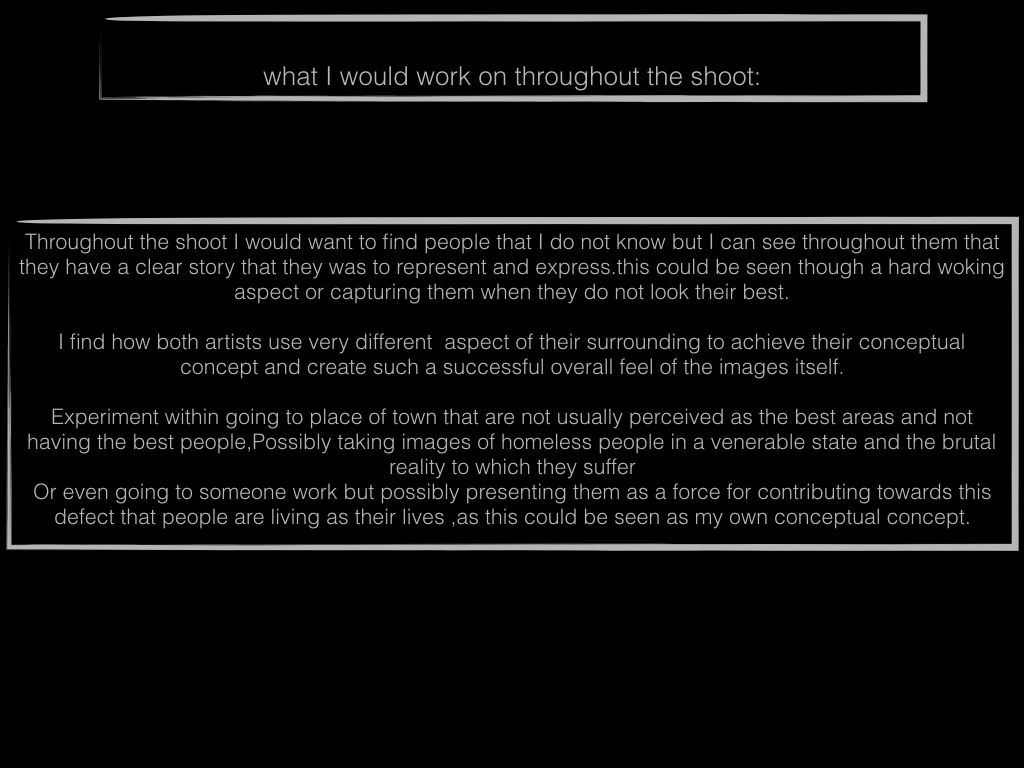

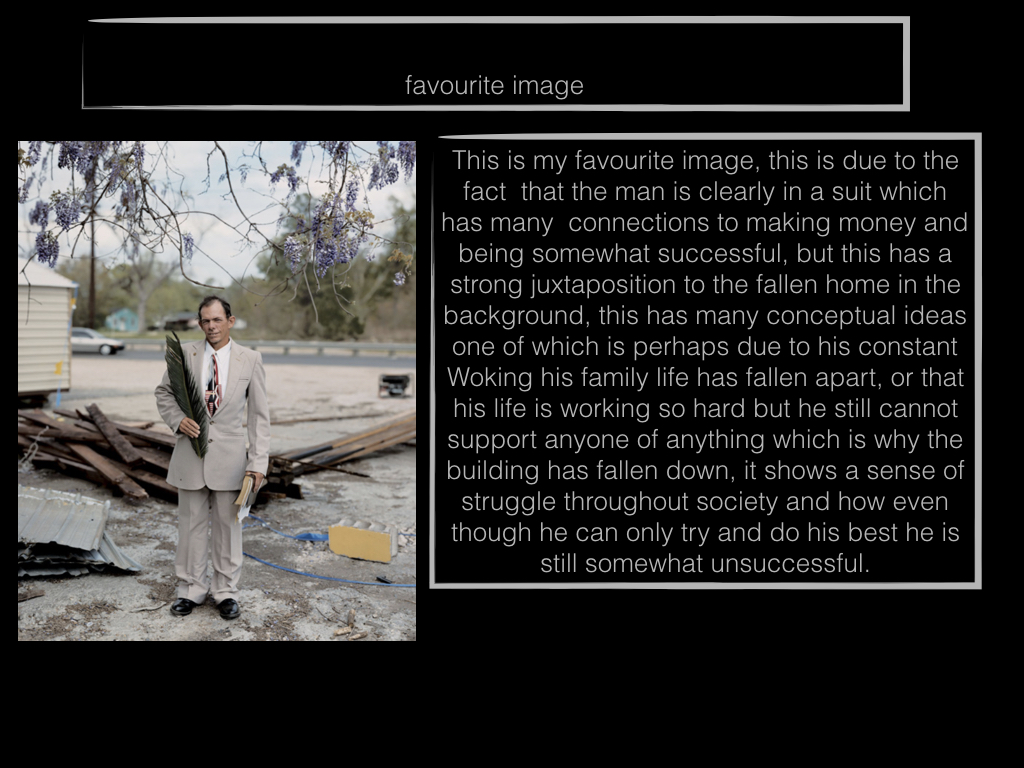
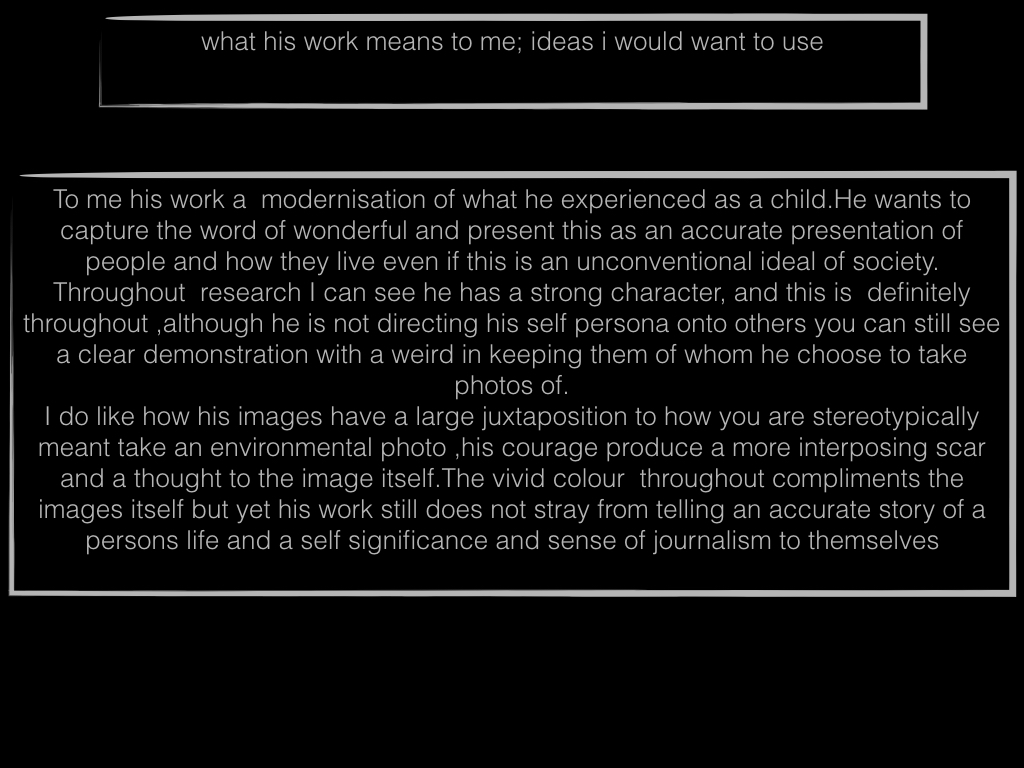
Environmental Portraits
What is an environmental portrait? An environmental portrait is a portrait of someone who has been taken in their place of work, which is the subject's usual environment. This can be their home or workplace, but usually within the image, it reflects and illuminates the person's personal life, seen through the surrounding objects within the picture itself. One photographer who does this is Sally Mann, as seen in her photos like the one below called 'Candy Cigarette'.Within environmental portraits the subject tends to have a relaxed and calm face, in order to create an effect inside the image itself, whilst allowing the image to be emphasized due to its dramatic characteristics. Sally Mann tended to focus on a individual face within her images, to really make out the backgrounds of the character within, allowing us to see the conditions many of the subjects were brought up in.



